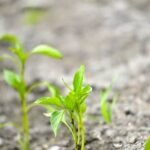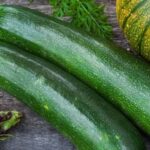Aquaponic gardening is revolutionizing the way we think about sustainable agriculture by combining aquaculture and hydroponics to create a self-sustaining ecosystem. In this article, we will explore the basics of aquaponics, how to set up your own system, the best fish and vegetables to choose, and the benefits of enrolling in a Udemy Aquaponic Gardening course.
Aquaponics allows you to grow fish and vegetables together in a closed-loop system, where the fish waste provides nutrients for the plants, and the plants help to purify the water for the fish. This symbiotic relationship creates a highly efficient and eco-friendly way to produce food.
In the following sections, we will delve into the fundamentals of aquaponic gardening, including how to choose the right equipment, maintain your system, select suitable fish and vegetables for cultivation. Additionally, we will highlight successful examples of aquaponic gardens through case studies and provide tips and tricks for ensuring your own success in this innovative form of agriculture.
Whether you are a beginner or an experienced gardener looking to expand your knowledge, a Udemy Aquaponic Gardening course can offer valuable insights into this exciting field.
The Basics of Aquaponics
Aquaponic gardening is a unique and sustainable way of growing fish and vegetables together in a closed-loop system. In this section, we will explore the basics of aquaponics and understand the intricate relationship between fish and plants in this innovative gardening method.
How Aquaponics Works
In aquaponic gardens, fish waste provides an organic nutrient source for plants. As the fish excrete waste, it is broken down by beneficial bacteria into nitrates, which are then absorbed by the plants as food. In turn, the plants purify the water and provide a clean environment for the fish to thrive. This symbiotic relationship creates a self-sustaining ecosystem where both fish and plants benefit from each other’s presence.
The Importance of Water Quality
One of the key factors in successful aquaponic gardening is maintaining optimal water quality. Fish require clean water to thrive, so it’s crucial to monitor pH levels, ammonia, nitrites, and nitrates regularly. Proper filtration systems and regular water testing are essential for keeping the aquatic environment healthy for your fish and plant life.
Understanding Nutrient Cycling
The concept of nutrient cycling is at the core of aquaponic gardening. As fish consume food, they produce waste that contains ammonia. Beneficial bacteria then convert this ammonia into nitrites and then into nitrates, which act as fertilizers for the plants. The plants absorb these nutrients, effectively removing them from the water and helping to maintain water quality for the fish. Understanding this cycle is crucial to maintaining a thriving aquaponic system.
By gaining a deeper understanding of how aquaponics works and the relationship between fish and plants within this system, individuals can harness its benefits to create sustainable and productive gardens. With proper knowledge and techniques gained from Udemy Aquaponic Gardening Growing Fish and Vegetables Together course, anyone can successfully set up their own thriving aquaponic garden at home or on a larger scale.
Setting Up Your Aquaponic System
When it comes to setting up your aquaponic system, there are a few key pieces of equipment that you will need to ensure the success of your garden. Here are the essential items required for setting up an aquaponic system:
- Fish tank: This is where your fish will live and produce waste that will be converted into nutrients for your plants.
- Grow bed: The grow bed is where your plants will be situated, and it is where they will receive the necessary nutrients from the fish waste.
- Water pump: A water pump is essential for circulating the water from the fish tank to the grow bed, ensuring that all components of your system are working together efficiently.
- Aeration system: Your fish will need oxygen, so an aeration system is crucial for keeping them healthy and happy in their tank.
Once you have set up your aquaponic system, it is important to remember that maintenance is key to its success. Regular maintenance tasks include checking water levels, monitoring pH levels, and ensuring that all equipment is functioning properly.
Here are some maintenance tips to keep in mind:
- Regularly check and clean the filters in your system to prevent any build-up of debris or waste.
- Monitor the health of your fish regularly, looking out for any signs of illness or distress.
- Keep an eye on plant growth and adjust nutrient levels as needed to ensure healthy growth.
By learning how to set up and maintain an aquaponic gardening system through a course like Udemy’s “Aquaponic Gardening Growing Fish and Vegetables Together,” individuals can gain valuable knowledge that will help them succeed in this unique form of gardening. With the right equipment and proper maintenance, aquaponic gardening can be a rewarding way to grow both fish and vegetables at home.
Choosing the Right Fish for Your Aquaponic Garden
When it comes to choosing the right fish for your aquaponic garden, there are several factors to consider. The type and size of fish you choose will directly impact the health and success of your overall system. It’s important to select fish that are well-suited for aquaponic environments and can thrive in a closed-loop system alongside your plants.
Considerations for Fish Selection
One key consideration when choosing fish for your aquaponic garden is the water temperature requirements of the species. Different types of fish have different temperature preferences, so it’s essential to select species that can tolerate the specific conditions of your aquaponic setup. Additionally, some fish may have specific dietary needs or behaviors that make them more or less suitable for integration into an aquaponic system.
Popular Fish Choices for Aquaponics
Some of the most commonly chosen fish for aquaponic gardening include tilapia, trout, catfish, and carp. These species are known for their adaptability to aquaponic environments and their ability to coexist with plant life. Tilapia, in particular, is a popular choice due to its fast growth rate and omnivorous diet, making it relatively easy to maintain in an aquaponics system.
The Role of Fish in Aquaponics
In an aquaponic system, fish play a crucial role in providing nutrients for plant growth through their waste products. As they produce ammonia-rich waste, beneficial bacteria convert this ammonia into nitrites and then nitrates, which are used as fertilizer by the plants. Therefore, selecting the right fish species is essential not only for their own well-being but also for creating a balanced ecosystem that supports healthy plant growth.
Choosing the right fish for your aquaponic garden is a critical step towards building a successful and sustainable system. By considering factors such as water temperature requirements, dietary needs, and behavioral characteristics of different species, you can create an environment where both fish and plants thrive harmoniously together.
If you want to learn more about selecting the best fish for your aquaponic setup, consider enrolling in an Udemy Aquaponic Gardening course where you can gain valuable insights from experts in the field.
Selecting the Best Vegetables for Aquaponic Cultivation
When it comes to selecting the best vegetables for aquaponic cultivation, there are a few key factors to consider. One of the most important considerations is the suitability of the plant for growing in a hydroponic system, as well as its compatibility with the fish in your aquaponic garden. Some vegetables thrive in this unique environment, making them ideal choices for aquaponic gardening.
Leafy greens such as lettuce, spinach, and kale are excellent choices for aquaponic cultivation. These plants have shallow root systems that make them well-suited for the grow beds typically used in aquaponics. Additionally, they grow quickly and can provide a continuous harvest throughout the growing season, making them a popular choice among aquaponic gardeners.
Herbs like basil, mint, and cilantro also do well in an aquaponic system. These plants require plenty of water and nutrients, making them a perfect fit for the nutrient-rich water that is produced by the fish in your aquaponic setup. With proper care and attention to water quality and nutrient levels, herbs can thrive and provide a bountiful harvest for culinary use.
Other vegetables that are suitable for aquaponics include tomatoes, cucumbers, peppers, and even certain varieties of beans. These plants require slightly more space than leafy greens or herbs but can still be successfully grown in an aquaponic system with proper support structures and attention to their specific needs.
By carefully selecting the right vegetables for your aquaponic garden, you can create a thriving ecosystem that produces both fresh produce and healthy fish, all with the help of Udemy Aquaponic Gardening Course.
The Benefits of Udemy Aquaponic Gardening Course
Aquaponic gardening is a sustainable and efficient way of growing fish and vegetables together, utilizing the symbiotic relationship between aquatic animals and plants. If you’re new to aquaponic gardening or looking to enhance your knowledge and skills in this area, the Udemy Aquaponic Gardening Course offers a comprehensive learning experience. Here are some of the benefits of enrolling in this course:
What You Will Learn:
- The fundamental principles and concepts of aquaponics
- How to set up and maintain an aquaponic system
- Essential equipment needed for successful aquaponic gardening
- Selecting the right fish and vegetables for your setup
- Tips for ensuring a thriving environment for both fish and plants
- Troubleshooting common issues in aquaponic systems
- Sustainable practices for maintaining a healthy ecosystem
The Udemy Aquaponic Gardening Course provides a wealth of knowledge and practical insights that will empower you to create and maintain your own thriving aquaponic garden. By learning from experienced instructors, you can gain valuable expertise that will help you avoid common pitfalls and maximize the productivity of your system. Whether you’re interested in setting up a small-scale garden at home or exploring commercial opportunities, this course equips you with the necessary skills to succeed in aquaponic gardening.
Enrolling in the Udemy Aquaponic Gardening Course can also open up opportunities for networking with other like-minded individuals who share your passion for sustainable agriculture. By connecting with fellow students and instructors, you can exchange ideas, troubleshoot challenges, and stay informed about advancements in aquaponics. This sense of community can contribute to your ongoing success as an aquaponic gardener, providing support and inspiration as you continue to expand your knowledge and skills in this field.
Tips and Tricks for Successful Aquaponic Gardening
Aquaponic gardening is a sustainable and innovative way of growing fish and vegetables together, utilizing the relationship between aquatic animals and plants to create a thriving ecosystem. To ensure successful aquaponic gardening, there are several tips and tricks that can help you maintain a healthy and productive system.
One important tip for successful aquaponic gardening is to regularly monitor water quality. Since the health of both the fish and the plants in an aquaponic system depends on the water they share, it is crucial to keep an eye on parameters such as pH, ammonia levels, and dissolved oxygen. Regular testing and maintenance of water quality will help prevent any imbalances that could harm your aquatic life or plant growth.
Another valuable trick for successful aquaponic gardening is to properly manage feeding schedules for your fish. Overfeeding can lead to excess waste in the water, which can negatively impact water quality and plant health. It is important to feed your fish in moderation and only as much as they can consume within a few minutes. This will help maintain a balanced ecosystem within your aquaponic system.
Lastly, incorporating beneficial bacteria into your aquaponic system can greatly contribute to its success. These beneficial bacteria help convert harmful ammonia from fish waste into nitrates that can be used by the plants as nutrients. Understanding how to promote the growth of these bacterial colonies will improve the overall health of your aquaponic garden.
| Tips for Successful Aquaponic Gardening | Benefits |
|---|---|
| Regular monitoring of water quality | Prevents imbalances that could harm aquatic life or plant growth |
| Proper management of feeding schedules for fish | Maintains balanced ecosystem and prevents excess waste |
| Incorporating beneficial bacteria into the system | Converts harmful ammonia into nutrients for plant growth |
Case Studies
Aquaponic gardening has gained popularity in recent years as a sustainable and efficient way to grow fish and vegetables together. One of the key aspects of aquaponic gardening is understanding the relationship between fish and plants, which is crucial for a successful system. With the right knowledge and equipment, setting up an aquaponic system can be relatively straightforward, and with the help of Udemy Aquaponic Gardening course, you can learn everything you need to know to get started.
The Udemy Aquaponic Gardening course offers a comprehensive overview of aquaponics, covering everything from the basics of the system to tips for maintaining a successful garden. Participants will learn about the different types of aquaponic setups, equipment needed for a thriving system, and how to ensure the health and well-being of both fish and plants. This course also provides valuable insights into choosing the right fish for your system, as well as selecting the best vegetables for cultivation.
One of the benefits of Udemy Aquaponic Gardening course is that it provides practical knowledge that can be applied to real-life situations. Through case studies of successful aquaponic gardens, participants can gain valuable insights into what works and what doesn’t when it comes to implementing an aquaponic system. By learning from these examples, aspiring aquaponic gardeners can avoid common pitfalls and increase their chances of creating a flourishing garden.
| Topic | Data |
|---|---|
| Course Content | Basics of aquaponics, equipment setup, fish & vegetable selection |
| Case Studies | Practical insights into successful aquaponic gardens |
Conclusion
In conclusion, the future of aquaponic gardening holds great promise for sustainable agriculture. As more people become aware of the benefits of growing fish and vegetables together through Udemy’s Aquaponic Gardening course, we can expect to see a rise in the use of this innovative method. By understanding the relationship between fish and plants, as well as learning how to set up and maintain an aquaponic system, individuals can make a significant impact on their local food systems.
Through the Udemy Aquaponic Gardening course, participants will not only gain practical knowledge and skills but also learn about the environmental and economic benefits of this agricultural practice. The selection of the right fish and vegetables is crucial to the success of an aquaponic garden, and Udemy’s course provides valuable insights into making these choices. By sharing tips, tricks, and case studies of successful aquaponic gardens, Udemy is empowering individuals to create their own sustainable food sources.
As we look towards the future, it is clear that aquaponic gardening has the potential to revolutionize agriculture by providing a more efficient and environmentally friendly way to produce food. Through education and hands-on experience with techniques learned from Udemy’s Aquaponic Gardening course, individuals can contribute to a more sustainable future for our planet. With proper guidance and knowledge, anyone can become a successful aquaponic gardener and make a positive impact on their communities.
Frequently Asked Questions
What Is a Sustainable Method of Raising Both Fish and Vegetables Together?
One sustainable method of raising both fish and vegetables together is through the practice of aquaponics. This system involves cultivating plants in water that has been used to raise fish, allowing for a symbiotic relationship between the two.
What Is It Called When You Grow Fish and Plants Together?
Growing fish and plants together is commonly referred to as aquaponics. This innovative method utilizes the waste produced by the fish to provide nutrients for the plants, while the plants help to filter and clean the water for the fish.
Why Is Aquaponics Not Sustainable?
Aquaponics may not always be sustainable due to certain challenges such as maintaining proper balance of nutrients, managing water quality, and preventing disease outbreaks. Additionally, energy consumption for pumps and other equipment can impact its overall sustainability.

If you’re looking to get into vegetable gardening, or are just looking for some tips on how to make your current garden better, then you’ve come to the right place! My name is Ethel and I have been gardening for years. In this blog, I’m going to share with you some of my best tips on how to create a successful vegetable garden.





